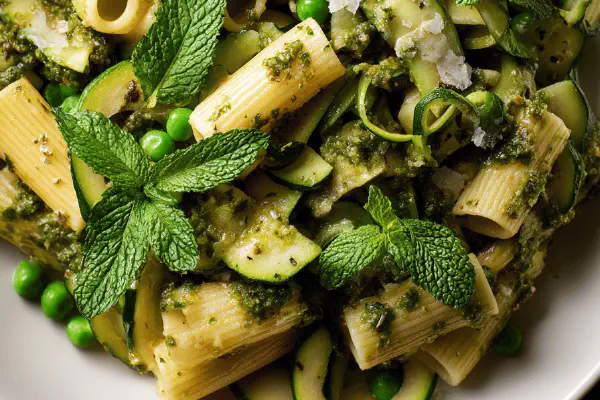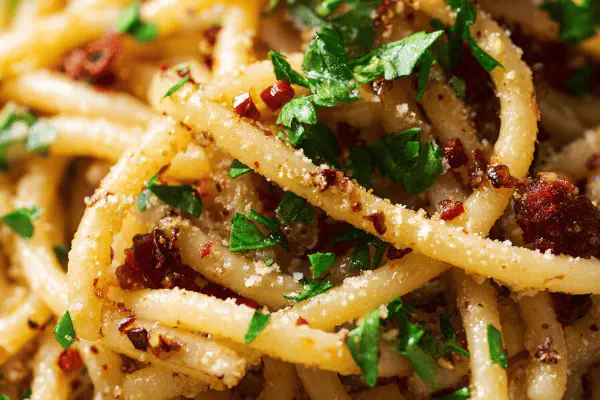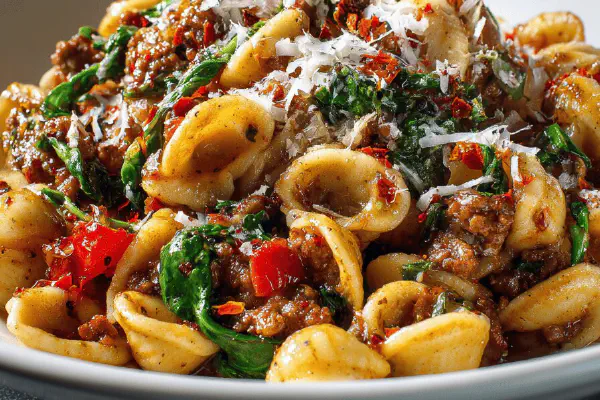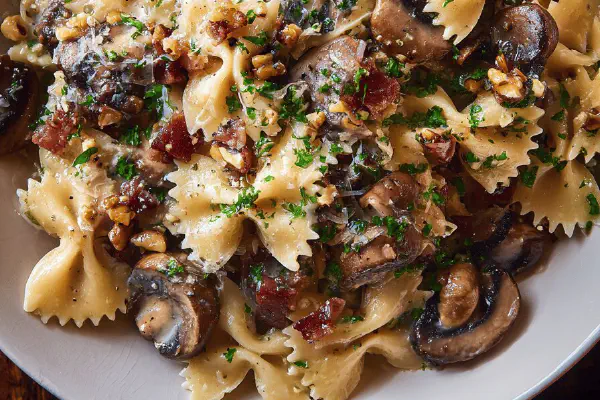Smoky Carbonara Twist
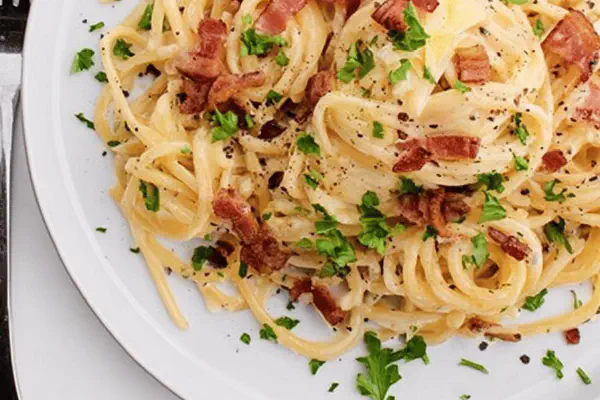
By Emma
Certified Culinary Professional
Ingredients
- 8 whole eggs
- 3 egg yolks
- 1½ tablespoons black pepper freshly cracked
- 1 cup grated pecorino romano cheese plus ¼ cup for finishing
- 10 cups water
- 1 tablespoon kosher salt
- 1 pound linguine pasta
- 8 ounces diced pancetta (substituted for bacon)
- 4 cloves garlic minced
- 1¼ to 1½ cups reserved pasta water
- 2 tablespoons fresh parsley chopped
About the ingredients
Method
- Beat eggs whole and yolks together in medium bowl, with cracked black pepper and 1 cup grated pecorino. Set aside. Texture: creamy, grainy from cheese.
- Fill large stockpot with 10 cups water, add 1 tablespoon kosher salt, bring vigorously to boil. Salted water is key for flavor. Add linguine, stir to avoid sticking. Cook until al dente, about 11 minutes but watch strands for just tender bite, not mush.
- While pasta cooks, heat 12-inch skillet over medium. Toss diced pancetta in dry. Render fat slowly, stirring often, about 10 to 12 minutes until golden and crisp but not burnt. When shriveled and fragrant, scoop pancetta out with slotted spoon, drain into small bowl, keep fat in pan.
- Turn heat off, add minced garlic to pancetta fat. Must soften gently for about 1½ minute. Aroma should bloom without browning or bitterness. Garlic softness, smell are your cues.
- Reserve 1½ cups starchy pasta water before draining pasta. Quickly drain linguine, then toss pasta into skillet with garlic fat. Stir briskly to coat every strand in aromatic fat. Heat off keeps garlic from burning, just warming the pasta slightly.
- Pour egg-cheese mixture immediately over pasta. Toss rapidly but gently, folding eggs into hot noodles. Add 1 cup of reserved pasta water, continue tossing vigorously to emulsify sauce, avoid scrambling eggs. Sauce thickens, coats each strand almost glossy. If sauce feels thick or dry, slowly add up to ½ cup more pasta water to loosen.
- Serve promptly in large bowl. Spray with remaining pecorino cheese, scatter crisp pancetta crumbles, sprinkle fresh parsley for freshness and color contrast.
Cooking tips
Chef's notes
- 💡 Beat eggs with pecorino off heat. Egg texture delicate. Whisk fast later with hot pasta to avoid lumps. Older eggs dry, curdle easy. Fresh key. Replace pecorino with grana padano if needed but lower salt elsewhere in sauce.
- 💡 Pancetta should render slowly over medium heat. Rush and you get burnt fat or uneven crisp. Listen for crackle shift. When pancetta shrivels, smells nutty and fat pools, scoop out meat; keep fat in pan for garlic step.
- 💡 Garlic melts in pancetta fat with heat off or lowest possible. One and a half minute max. Watch aroma bloom, no browning. Burnt garlic bitter, raw garlic too sharp. Adjust cloves by taste linked to pungency preferences.
- 💡 Reserve at least 1½ cups pasta water before draining. Water warm and starchy helps emulsify sauce. Toss pasta in fat first off heat—coats strands, lowers direct heat impact on eggs. Pour eggs in one constant stream. Keep tossing rapid but gentle. Sauce thickens gradually, glossy coating.
- 💡 If sauce thickens too fast or clumps, drizzle pasta water slowly while tossing. Add max half cup more for loosening. Avoid excess or sauce dilutes. Holding sauce off heat crucial. Serve immediately; sitting cools sauce, dries surface quickly, losing silkiness.
Common questions
How to avoid scrambled eggs?
Egg mix off heat, toss hot pasta fast. Use tongs to fold fast but gentle. Add pasta water in small doses helps spread heat evenly, stops chunks. If too hot pan or pasta, eggs seize. Chill eggs or more water next try.
Can I use bacon instead of pancetta?
Yes, but drain well. Bacon yields greasier fat, faster render. Pancetta slower, sweeter smoke. Bacon crisp marks uneven if rushed. Try shallots for garlic allergy; soften finely diced in fat for milder aroma.
How to fix lumps or curdling?
Cause usually pasta or pan too hot. Also egg freshness. Fix: add more warm pasta water, toss vigorously. If curdled, add splash cream to rebind but changes taste. Next time chill eggs briefly or lower heat.
Best way to store leftovers?
Cool quickly, store airtight in fridge. Reheat gently with splash warm water, toss on low heat or microwave low. Direct heat brakes sauce, makes it grainy or dry. Leftover sauce thicker, add more water for silk again.
